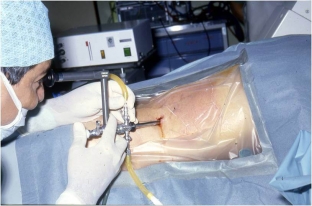Inflammatory diseases of the urinary system make up a huge percentage of all urological pathology. The development of purulent-inflammatory processes in the kidneys leads to their destructive changes and serious violations of vital functions. One of the most formidable complications of kidney pathology is renal failure. But inflammatory processes in the kidneys also tend to spread to the perirenal tissue, causing an equally serious complication - paranephritis. Such inflammation of the perinephric tissue, with the wrong therapeutic approach, can lead to the development of peritonitis and death, but the correct treatment of paranephritis will help to avoid such consequences.
Methods of diagnosis and effective treatment of paranephritis
Paranephritis is an inflammatory process that most often develops as a secondary disease against the background of purulent-inflammatory processes in the kidneys. With this disease, purulent processes develop in the perirenal tissue under the influence of pathogenic bacteria, on the basis of which an abscess can form and break through into the abdominal cavity. Diagnosis of paranephritis should be aimed at timely detection of the disease and prevention of abscess formation. Treatment of paranephritis can be carried out conservatively and surgically, depending on the etiology, severity and prevalence of the pathology.
Paranephritis treatment:
- what tests are performed to diagnose paranephritis;
- main conservative treatment of paranephritis;
- surgical treatment of paranephritis: the essence of the operation.
What tests are performed to diagnose paranephritis
Diagnosis of paranephritis should begin with a detailed collection of anamnestic data, since the characteristic clinical picture and information about recent kidney diseases already indicate the development of inflammation in the perirenal tissue. The following additional diagnostic methods are used:
- fluoroscopy - there is a decrease in the amplitude of the excursion of the diaphragm on the side of the lesion;
- survey urography - the erased contour of the lumbar muscle is visualized, the curvature of the lumbar spine towards the affected side, the change in the contours of the kidney;
- ultrasound examination - an encapsulated cavity containing liquid is determined;
- when performing a puncture of the perirenal tissue, the doctor receives pus from the punctured area;
- CT and MRI allow us to clarify the size and duration of the inflammatory process.

Basic conservative treatment of paranephritis
The choice of treatment for paranephritis depends primarily on the severity of the kidney disease that provoked this complication. Conservative treatment of paranephritis is possible if the process is infiltrative and the underlying disease is not an indication for surgical intervention. The patient is prescribed large doses of antibacterial drugs, taking into account the sensitivity of pathogens to them. A good effect is the use of conservative methods of restorative and detoxification therapy, biogenic stimulants, blood transfusion. If, on the background of conservative therapy, the pain syndrome does not decrease, the mobility of the spine remains limited, and the indicators of the general blood test indicate an ongoing inflammatory process, the patient is indicated for surgical intervention.
Surgical treatment of paranephritis: the essence of the operation
Surgical treatment of paranephritis is performed as follows: by means of subcostal retroperitoneal lumbotomy, the retroperitoneal space is opened, the abscess formed in the perirenal tissue is dissected and its cavity is widely drained. Then the kidney is exposed and the perirenal space and purulent cavities are examined with dissection of all pockets of perirenal tissue. If paranephritis developed against the background of pyonephrosis, the necessary volume of surgical intervention is nephrectomy. If the patient was diagnosed with chronic paranephritis, in which conservative therapy was not effective enough, the sclerosed tissue in the area of the hilum of the kidney, pararenal pelvis and ureter is surgically removed. With timely treatment of paranephritis, the prognosis for the patient is usually favorable.






Add a comment